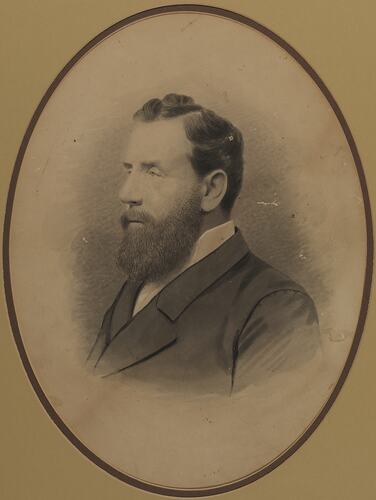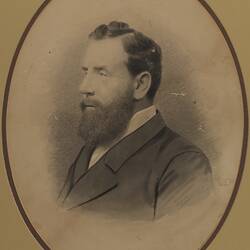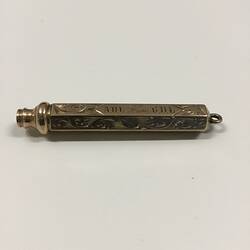Summary
George David Langridge was an English migrant who as well as Trades & Customs Commissioner, served at different times as Postmaster General, Collingwood Councillor, member of the Victorian Legislative Assembly and grand master of various friendly societies.
Early Years:
George David Langridge was born in Kent, England in 1829. He became a carpenter's apprentice and then went into partnership with his brother, a builder in London.
Marriage & Arriving in Australia:
In 1851 he married Maria Elizabeth from Tunbridge Wells and they went on to have nine sons and two daughters. In 1853, Langridge was drawn to the NSW and Victorian goldfields but his time at the Ballarat and Bendigo diggings was unsuccessful.
A Varied Career:
The family settled in Collingwood and Langridge subsequently worked as a carpenter on the building of Melbourne's military barracks; established his own contracting business; and opened an auctioneering and estate agency firm. In 1866 he was elected to the Collingwood Town Council and by 1881 he had established three building societies, most notably the Langridge Mutual Permanent Building Society.
The Museum's collection holds digital copies taken from two original colourised photographic portraits of George (MM 151183) and Maria (MM 151184) Langridge, produced around 1870. In 1874 Maria died and Langridge married Emily Judson in 1877. In 1879, Langridge gave Arthur, one of his many sons, a retractable gold engraved pencil purchased in Bourke Street Melbourne as a 21st birthday gift. This pencil was passed down the family line and is now in the Museum's collection (HT 56538).
From 1874-91 Langridge represented Collingwood in the Legislative Assembly and had various roles; he was also a grand master of the Manchester Unity Independent Order of Odd Fellows, a Freemason and a member of the United Ancient Order of Druids.
Trade & Customs Recorded in a Certificate:
Of particular relevance to the Museum's collection was his role as commissioner of trade and customs, his appointment documented by the parchment certificate (HT 56026) on 8 March 1883. The certificate provides a direct link between George Langridge, customs activity and the Customs House building now the site of the Immigration Museum.
Langridge held the position of Commissioner until February 1886, when ill health saw him head for a year's holiday in England. He returned to various government appointments and died suddenly at his Clifton Hill home on 24 March 1891.
According to S.M. Ingham in the 'Australian Dictionary of Biography' (Vol. 5, 1974, online 2006), Langridge's 'unassuming ways and common sense in politics enabled him to retain the warm allegiance of working-class electors who were becoming dissatisfied with other Liberal representatives. His public meetings at Collingwood were gala occasions: he never lost the common touch, and artisans and labourers mourned his death in impressive numbers.'
The Collection:
The Museum's collection relating to George Langridge provides a valuable link to one of Melbourne's most significant 19th century buildings, the old Customs House which houses the Immigration Museum, enabling further interpretation of that site. The portraits, certificate, pencil and the related story of George David Langridge, represent a number of key moments in Melbourne and Victoria's history.
More Information
-
Keywords
-
Authors
-
Article types




